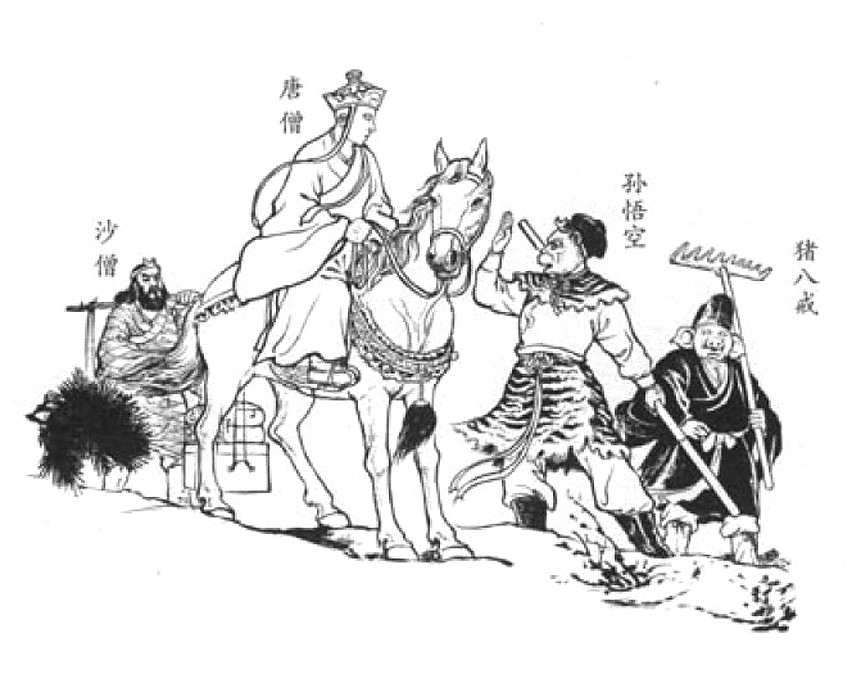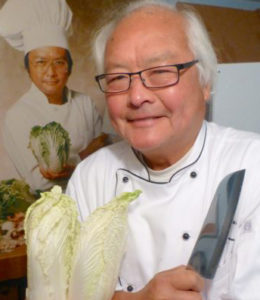Wok & Roll by Peter Kwong, (Frederic) Inter-County Leader
» Download this column as a Word document
» Download the image that accompanies this column
A while back, I wrote about “Heart Sutra,” a true story of a Buddhist monk who traveled to the west (India) during the Tang Dynasty, 618-926 A.D. After traveling three years on foot through uninhabited mountains and deserts, he finally reached India and obtained the noble sutras.

He returned to China and received a hero’s welcome, and the emperor was pleased and rewarded him with the highest honor of naming him after the Tang Dynasty. Hence, instead of Chen Xuan Zang, he became Tang Xuan Zang. He spent the rest of his life translating thousands of scriptures and preaching the true meanings of Buddhism to its followers.
After almost a thousand years, an author named Wu took the storyline and created a novel — “Journey to the West.” Based on the journey, Wu created a totally different story filled with different characters and adventures. While all were the imaginations created by Wu, yet the adventures were so vivid and descriptive that they all came to life.
The novel has strong roots in Chinese folk religion. It is a combination of Chinese mythology, Confucianism, Taoism and Buddhism. For hundreds of years, the novel has been a “must-read” for all scholars and common folks. All readers are hooked on the characters, the storyline and the dangers of the journey that Wu created. With his four trustworthy disciples, all difficult encounters vanished each time as the group was driven by faith, the power of unity and the virtue of cooperation.
There are five main characters, Chen Xuan Zang (who later was known as Tang Xuan Zang), with his disciples Sun Wu Kung, also known as the Monkey King; Zhu Ba Jie, a pig in human form; Sha Wu Jing; and Yu Long, a dragon prince in the form of a white horse, who was Tang’s ride. The novel has 100 chapters, and if you are a bit confused now, just you wait. Each chapter has a different plot with more unique characters. It makes you wonder just how Wu the author could create all these different personalities, plus keep track of each individual story and all the details at the same time. There weren’t any computers available then to help store all the information.
Actually, the main character of the novel is Sun, the Monkey King. He was perceived inside a stone at the same time when the earth was formed and nourished by the five elements (metal, wood, water, fire and earth) for billions of years. That’s when Taoism came in — that our world is guarded with the balance of these five elements: The metal can cut the wood, but the wood (trees) can control the water (flood); the water can put out the fire; the fire can destroy the land (earth), and the land can bury the metal.
So, one day, the stone cracked open, and out came a stone creature in the form of a monkey. He was already gifted, nourished by the power. But he became so conceited that he created his own kingdom with his fellow monkeys and called himself “Great Sage Equal to Heaven.” His rebellious spirit angered the Jade Emperor (as in Zeus with the Greek culture). Buddha was sent to trap him under a mountain for 500 years. He could regain his freedom only if he would assist a monk to obtain the scripture from the west.
During the early Tang dynasty, the folks knew only greed, hedonism, promiscuity and sins. So, Buddha sent Guanyin to search China for someone to travel to India and bring back the Buddhist sutra of “transcendence and persuasion for goodwill” back to China. She found Chen (before he became Tang), the perfect choice. But then, after realizing that the journey was long and dangerous, she decided to find him some disciples who would protect Tang all the way to India and assist him in every which way. All the chosen disciples were immortals who had committed a crime previously. Helping Tang obtain the scripture would redeem their wrongdoings, and guarantee them a place in Buddhahood.
Sun, the Monkey King, was the perfect choice as he was the most intelligent and swift in combat. But he also had a temper. To solve the problem, Guanyin gave Tang a magic gold ring to put on Sun’s head, with a tightening mantra to give him an uncontrollable headache when he misbehaved.
Zhu, the second disciple, was previously the Marshal of the Heavenly Canopy, a commander of Heaven’s naval forces. However, he was banished to the mortal realm for harassing the moon god Chang E. During reincarnation, he was born to a mother pig. Hence though with a human body, he had the face of a pig. A reliable fighter, he was characterized by his insatiable appetites for food and women and was constantly looking for a way out of his duties.
Sha was previously the celestial Curtain Lifting General and was banished to the mortal realm for dropping and shattering a crystal goblet of the Queen Mother of the West. He was a quiet and generally dependable and hardworking character.

Yu, the third son of the Dragon King of the West Sea, was sentenced to death for setting fire to his father’s great pearl; but was saved by Guanyin from execution to stay and wait for his call of duty. He ended up as a white horse that carried Tang for the whole journey.
Together, they crossed wide rivers, flaming mountains and burning deserts, encountering many different magical monsters and evil demons. Amongst the underworld, inhabited by treacherous wizards and animal spirits, Tang’s flesh was known to provide potent life force and would gain immortality to whoever ate it. The demons would appear in the forms of human beings, yet were transformed from animal-spirits with enough Taoist spiritual merit.
Many times, the group was captured by demons with many disguises, and Tang’s fate would have ended on the demon’s dinner table. Yet somehow, they managed to escape by the wits and cunningness of Sun. On top of that, the group was secretly protected by the spirits from heaven. The story has a happy ending. After accomplishing 81 tasks to prove his faith and fortitude he finally received approval from the living Buddha to receive the noble sutras. After reaching India, they all gained Buddhahood. To these days, Tang’s translations of the sutras are still studied by many followers.
Though I’ve read the novel many times, and know all the characters by heart, I will read it again and again. You never know, I might learn something new.



